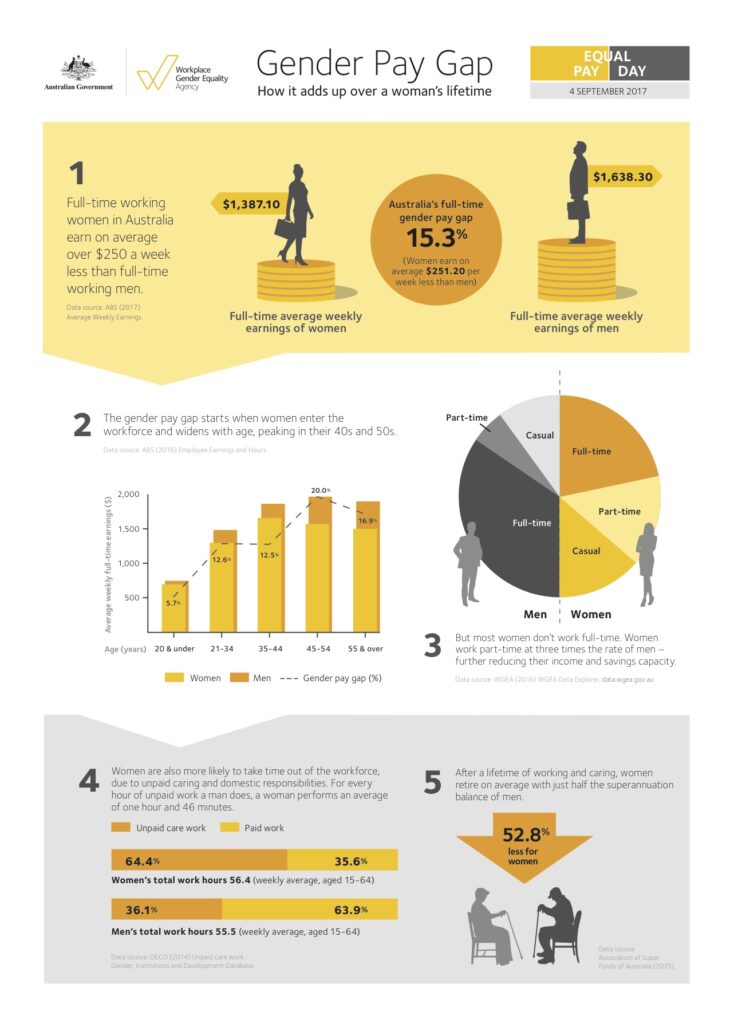Yesterday was Equal Pay Day, marking the additional days from the end of the previous financial year that women must work to earn the same pay as men.
Using average weekly earnings data from the Australian Bureau of Statistics (ABS), the Workplace Gender Equality Agency (WGEA) calculates the national gender pay gap to be 15.3 per cent for full-time employees, a difference of $251.20 per week.
Equal Pay Day is an important reminder of the continuing barriers women face accessing the same financial rewards for their work as men.
According to WGEA Director Libby Lyons Australia has achieved genuine equality between women and men in education, however, the persistent gender pay gap reflects the barriers women face in accessing equivalent pay packets to men.
“This is bad news for the economy, because it shows that business is not drawing on the enormous talent available in the female workforce”.
And it is a disaster for women, who are retiring with vastly smaller nest eggs than men due to the compounding effect of the gender pay gap and their far greater time spent on unpaid care work.
Closing the gender pay gap must be recognised as an urgent social and economic priority.
About the national gender pay gap
The national gender pay gap is the difference between women’s and men’s average weekly full-time base salary earnings, expressed as a percentage of men’s earnings.
It is a measure of women’s overall position in the paid workforce and does not compare like roles.
The gender pay gap is influenced by a number of factors, including:
- Discrimination and bias in hiring and pay decisions
- Women and men working in different industries and different jobs, with female-dominated industries and jobs attracting lower wages
- Women’s disproportionate share of unpaid caring and domestic work
- Lack of workplace flexibility to accommodate caring and other responsibilities, especially in senior roles
- Women’s greater time out of the workforce impacting career progression and opportunities.
Gender gap facts
- The national gender pay gap is 15.3 per cent. It has declined from 16.2 per cent in the past 12 months.
- The gender pay gap is highest in the 45-54 age group at 20.0 per cent.
- In the past 20 years, the national gender pay gap was highest in 2014 at 18.5 per cent and lowest in 2004 at 14.9 per cent.
- Increasing women’s workforce participation by 6 per cent could add $25 billion a year to Australia’s GDP.

![]()
![]()
















